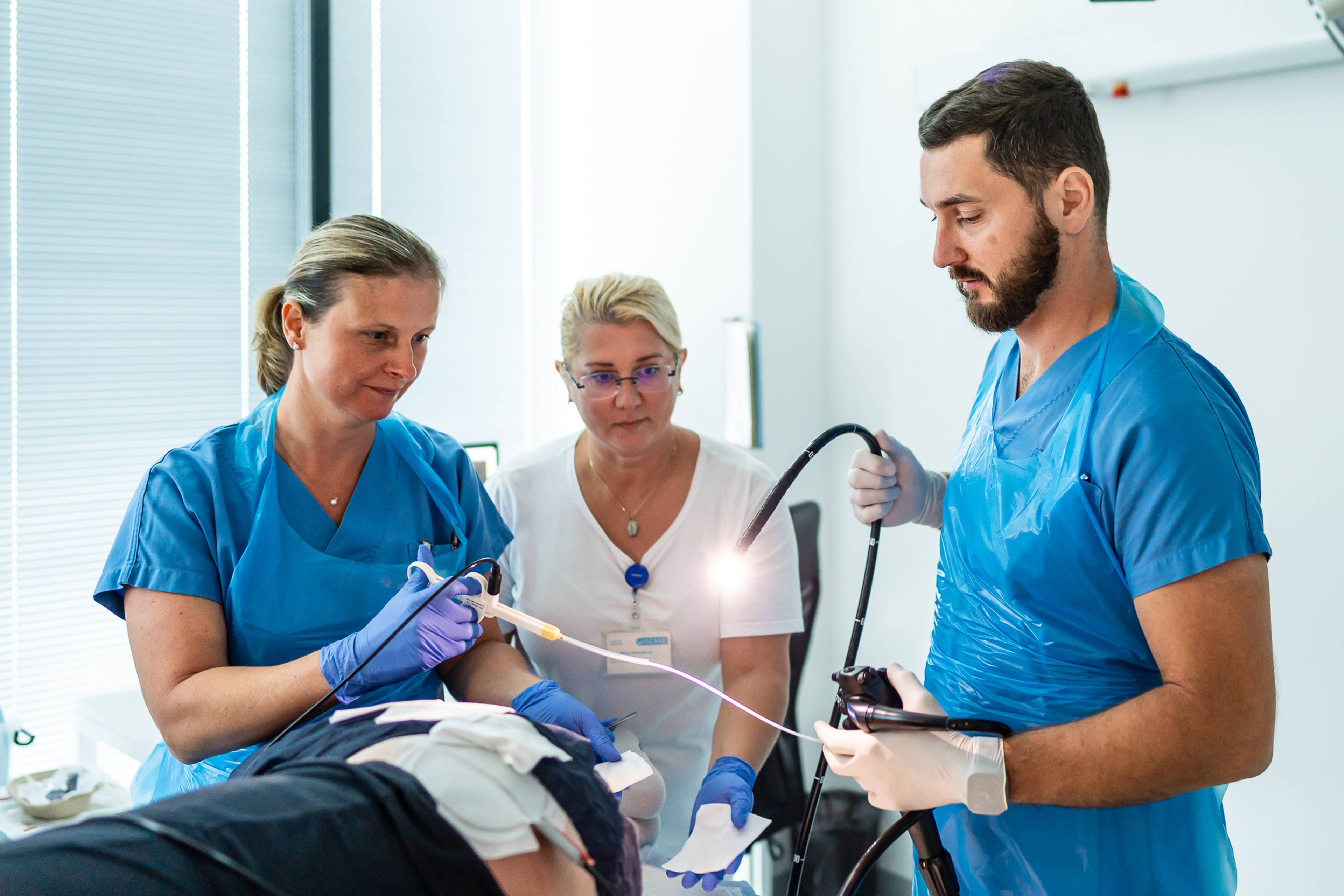Chromo-colonoscopy
Dispensary chromo-colonoscopy is a key tool in the prevention of colorectal cancer in patients with IBD, as it enables early detection of precancerous changes.
Dispensary chromo-colonoscopy in patients with idiopathic intestinal inflammation (IBD)
- Patients with ulcerative colitis or Crohn's disease affecting the large intestine are at increased risk of developing colorectal cancer (CRC), especially if the disease has lasted for more than 8 years, affects large sections of the colon, or is a long-term active disease. The risk of developing CRC is approximately 2-3 times higher than in the general population.
- For this reason, regular monitoring in the form of dispensary colonoscopy is recommended. This endoscopic examination of the colon is used to assess the extent and activity of inflammation and to specifically search for precancerous changes, known as dysplasia. In most patients, the first screening colonoscopy is performed 8 years after the onset of symptoms, with subsequent check-ups every 1–3 years, depending on the severity of the individual risk.
- In patients with IBD and concurrent primary sclerosing cholangitis (PSC), due to the significantly higher risk of CRC, colonoscopy is indicated immediately after the diagnosis of PSC, with repeat examinations at annual intervals. If dysplasia is found, the screening interval may be shortened to 3-6 months.
- Early precancerous changes (dysplasia) that arise in the context of IBD are often flat and inconspicuous, making them difficult to visualize during standard colonoscopy. Chromocolonoscopy is an improved endoscopic technique that uses colors to highlight mucosal structures. This increases the chances of detecting dysplasia, which can be easily overlooked in standard imaging.
We use the following two methods:
- Conventional chromoendoscopy, in which a dye (e.g., indigo carmine) is applied directly to the colon mucosa. This is currently the most accurate method, but it is more time-consuming and requires thorough bowel preparation and the absence of inflammatory changes.
- Virtual chromoendoscopy, in which the mucosa is illuminated with colored light (e.g., blue and green colors in Narrow Band Imaging, NBI) or the structures of the mucosa are highlighted using digital image processing in post-processing (e.g., Texture and Color Enhancement Imaging, TXI).
Take a look
What it looks like
Gastroenterology ISCARE






